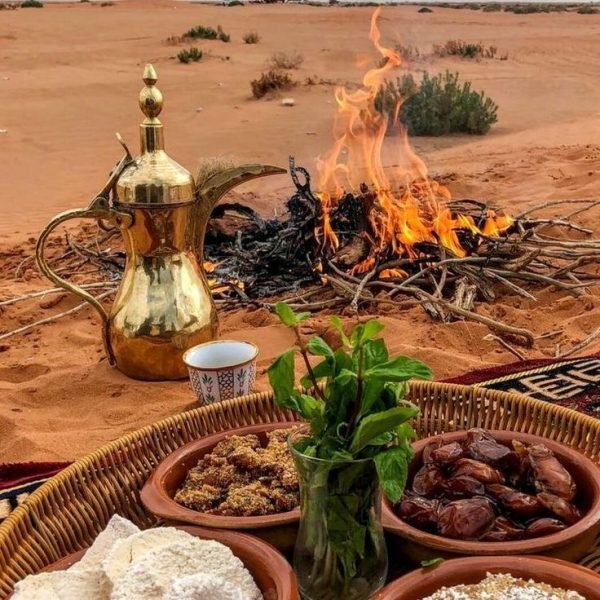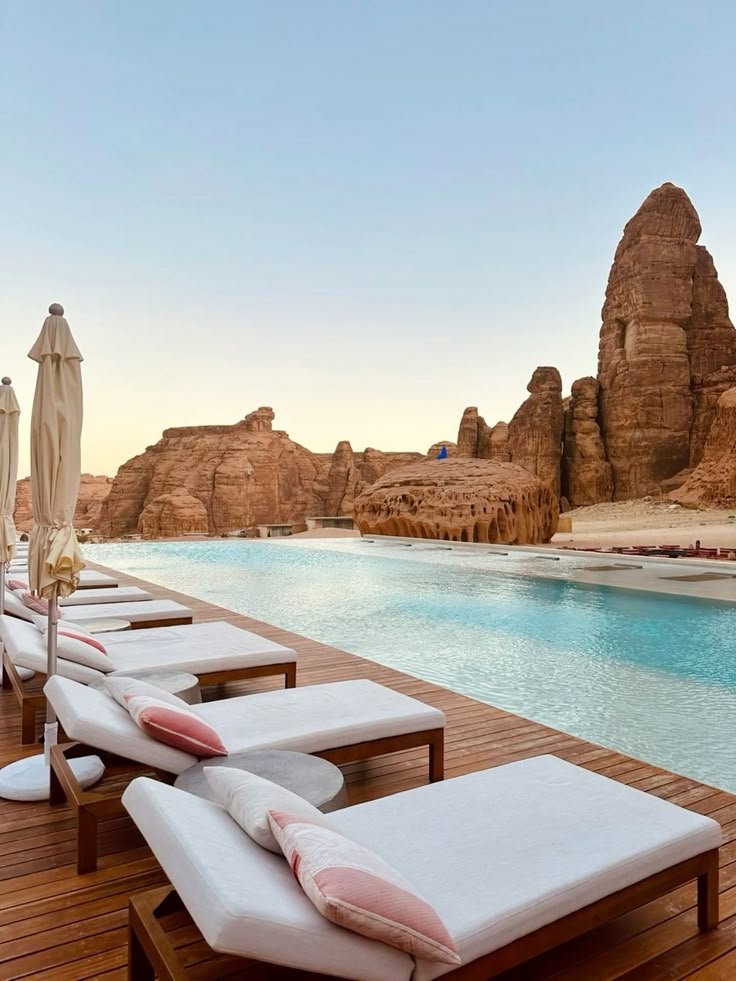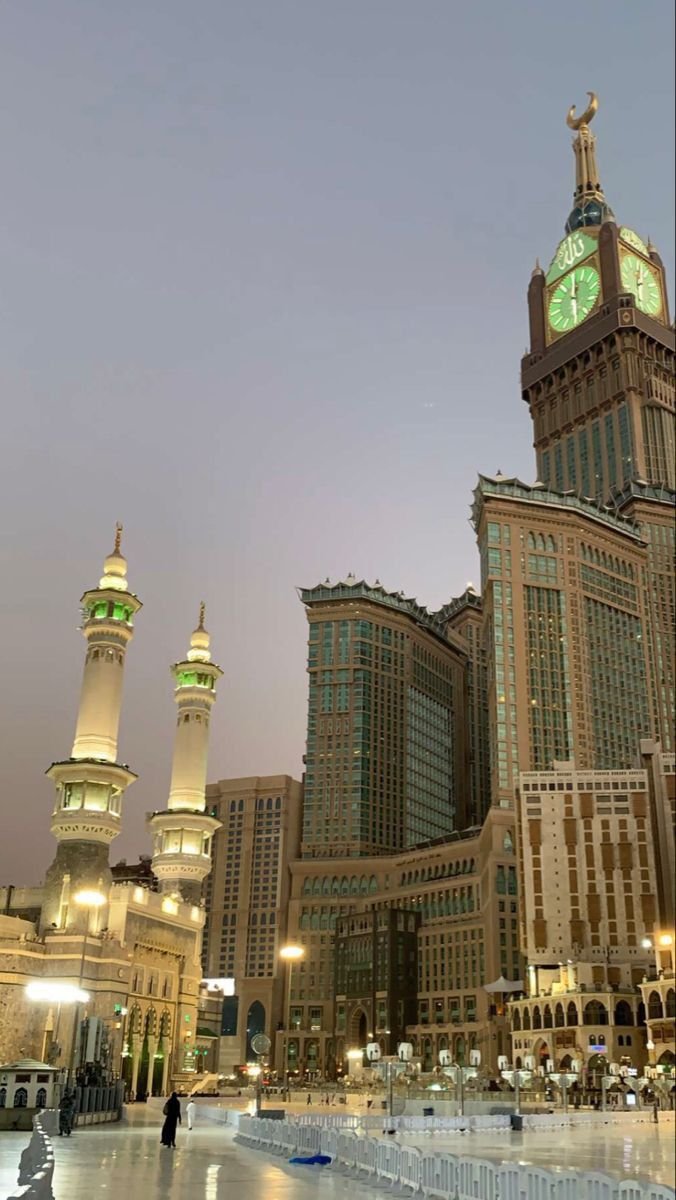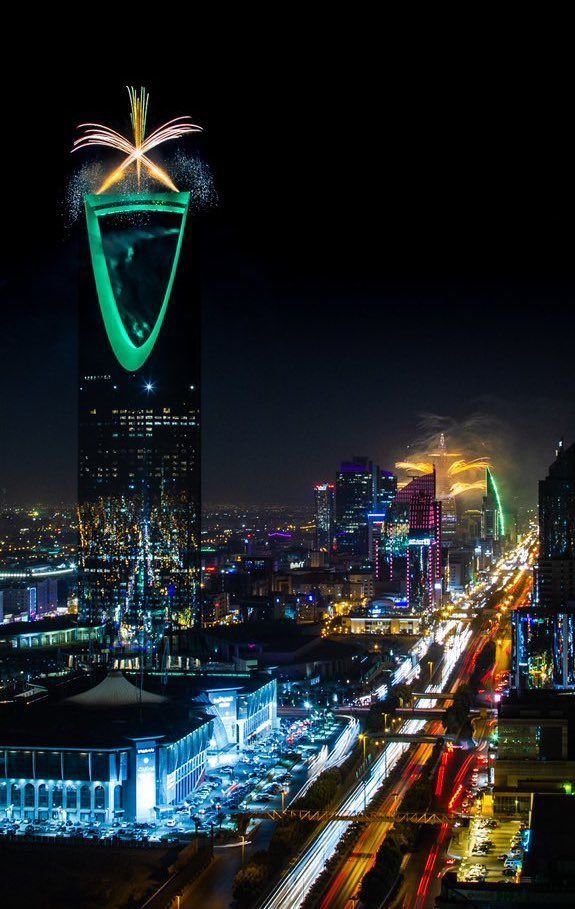Saudi Arabia
Welcome to Saudi Arabia
Afghanistan, a land of rugged mountains, ancient history, and rich cultural heritage, is gradually re-emerging as a destination for adventurous travelers in 2025. Despite decades of conflict, the country offers unique experiences for those willing to explore its breathtaking landscapes, historic sites, and vibrant bazaars. With careful planning and respect for local customs, visitors can discover a side of Afghanistan few outsiders have seen.
Saudi Arabia has recently opened its doors wider to international tourism as part of its ambitious Vision 2030 plan, which aims to diversify the economy and showcase the Kingdom’s heritage and natural beauty. This makes 2025 an ideal year to visit, as the country offers an intriguing mix of ancient tombs, futuristic cities, sweeping deserts, and turquoise waters along the Red Sea and Persian Gulf. Whether you are drawn to the spiritual significance of Mecca and Medina, the archaeological wonders of Al Ula, or the dynamic urban life of Riyadh and Jeddah, Saudi Arabia promises an unforgettable journey.
1.
Unparalleled Cultural Heritage: Afghanistan is home to some of the world’s most remarkable historical sites, including the ancient Buddhist statues of Bamyan, the Minaret of Jam, and the stunning mosques of Herat and Mazar-i-Sharif. These sites offer a glimpse into the country’s rich tapestry of civilizations and religious traditions.

2.
Stunning Natural Landscapes: From the remote Wakhan Corridor in the northeast, ideal for trekking and wildlife spotting, to the dramatic mountain vistas around Bamyan, Afghanistan’s natural beauty is both pristine and awe-inspiring. The country’s varied terrain provides opportunities for hiking, photography, and experiencing traditional rural life.

Planning Your Trip
Visa Information
Saudi Arabia has simplified its visa process in 2025 to encourage tourism. Citizens from over sixty countries can now apply for an eVisa online through a streamlined portal, with approvals often processed within a day or two. Tourist visas are available as single or multiple-entry permits, with multiple-entry visas valid for up to one year and allowing stays of ninety days per visit. Additionally, more travelers from countries with valid UK, US, or Schengen visas can obtain a visa on arrival, making spontaneous travel easier.
Applicants must hold a valid passport with at least six months’ validity beyond the travel date and provide proof of accommodation and medical insurance. Women can travel solo but should dress conservatively in respect of local customs. Digitalization is central to the travel experience, with many processes like visa applications, hotel bookings, and pilgrimage planning now online. At airports, expect advanced biometric checks including facial recognition and fingerprint scanning.
Best Time to Visit
Saudi Arabia has a desert climate characterized by very hot summers and mild winters. The best time to visit is between November and February when temperatures are pleasant and comfortable for outdoor activities. This period also coincides with vibrant cultural festivals such as Janadriyah and the King Camel Festival, offering visitors a chance to experience traditional Saudi culture and celebrations.
Getting To and Around
Saudi Arabia is accessible via several international airports, with Riyadh’s King Khalid International Airport, Jeddah’s King Abdulaziz International Airport, and Dammam’s King Fahd International Airport serving as major gateways. The Kingdom has invested heavily in modernizing its airports with smart technology for faster immigration and smoother travel.
Within the country, transportation options include domestic flights connecting major cities, an expanding network of highways, and public transport systems. Ride-hailing apps and taxis are widely available in urban areas. For a more immersive experience, consider renting a car to explore the diverse landscapes at your own pace. Digital platforms and apps facilitate hotel bookings, tours, and transport, enhancing convenience for travelers.

Accommodation
Saudi Arabia’s accommodation options have expanded significantly in recent years, reflecting the country’s push to become a top global tourist destination. Visitors can find everything from budget-friendly hotels to ultra-luxurious resorts, as well as serviced apartments, villas, and guest houses.
Accommodation Options
- Luxury Hotels and Resorts
Major cities like Riyadh, Jeddah, Mecca, and Medina boast world-class luxury hotels. Some notable properties include the Makkah Clock Royal Tower, a Fairmont Hotel, which offers stunning views of the Kaaba and direct access to the Grand Mosque, combining opulent comfort with spiritual proximity. In Jeddah, the Rosewood Jeddah Hotel provides lavish amenities such as rooftop jacuzzis overlooking the Red Sea, butler service, and exquisite dining options. The Waldorf Astoria Jeddah impresses with its grand Arabian-style interiors, Swarovski chandeliers, and personalized butler services. New openings like the Four Seasons Hotel Madinah, launching in early 2025, promise elegant rooms with views of the Holy Mosque and world-class spa facilities. These hotels are perfect for travelers seeking luxury, comfort, and convenience close to major religious and cultural sites. - Mid-Range and Budget Hotels
For travelers on a moderate budget, Saudi Arabia offers a wide range of mid-range hotels with excellent service and amenities. Many of these hotels are strategically located near shopping malls, business districts, and tourist attractions. Chains like Narcissus The Royal Hotel in Riyadh provide fitness centers, free parking, and 24-hour front desk service, ensuring a comfortable stay. Budget hotels and guesthouses are also available, particularly in cities like Jeddah and Riyadh, offering clean, simple accommodations for travelers looking for affordability without sacrificing quality. - Serviced Apartments and Extended Stays
For longer stays or families seeking more space and privacy, serviced apartments have become increasingly popular. These come equipped with kitchenettes, living areas, and laundry facilities, providing a home-like atmosphere. Cities such as Riyadh and Jeddah have many serviced apartments catering to digital nomads, business travelers, and expatriates. Options like Al Eairy Furnished Apartments in Madinah and Cloud 7 Residence in Al Ula offer amenities such as free WiFi, parking, and pools, making them ideal for extended visits. - Villas and Shared Accommodations
Villas are an excellent option for families or groups, offering spacious living with private pools and gardens in some cases. Shared villas are also available for cost-sharing travelers or longer stays. These accommodations provide privacy and comfort, often situated in gated communities with additional facilities. - Resorts and Beach Stays
Saudi Arabia’s Red Sea coast and Arabian Gulf are home to luxurious resorts that combine relaxation with adventure. Resorts in Jeddah and along the Red Sea offer private beaches, water sports, spas, and fine dining. These are perfect for travelers seeking a resort-style vacation with plenty of leisure options.

Food and Drink
Saudi Arabian cuisine is a reflection of its rich cultural heritage, blending traditional Arabian flavors with influences from across the Middle East and beyond. The food scene in 2025 caters to all palates, from authentic local dishes to international gourmet experiences.
- Traditional Saudi Cuisine
Staples of Saudi cuisine include dishes like kabsa and mandi—flavorful rice dishes cooked with meat such as lamb, chicken, or camel, infused with aromatic spices. Other popular dishes include jareesh (crushed wheat porridge), samboosa (savory pastries), and mutabbaq (stuffed pancakes). Dates and Arabic coffee (gahwa) are traditional accompaniments, often served as a gesture of hospitality. - Dining in Cities and Religious Centers
In cities like Riyadh and Jeddah, you will find a vibrant dining scene that ranges from street food stalls to upscale restaurants. Near the holy cities of Mecca and Medina, many hotels and eateries cater to pilgrims, offering hearty meals that respect dietary and religious requirements. Hotels such as the Makkah Clock Royal Tower and Four Seasons Madinah feature restaurants serving both local and international cuisine, ensuring a diverse culinary experience. - International and Fusion Cuisine
Saudi Arabia’s cosmopolitan cities host a wide array of international restaurants, reflecting the tastes of expatriates and tourists. You can enjoy everything from Lebanese mezze and Persian kebabs to Italian, Indian, and Asian fusion dishes. Luxury hotels often feature multiple dining venues, including fine dining with world-class chefs, offering gourmet experiences alongside traditional flavors. - Coffee Culture and Cafés
Coffee culture is deeply ingrained in Saudi society. Traditional Arabic coffee is often served with dates, but modern cafés also serve specialty coffees, teas, and light snacks. In urban centers, trendy coffee shops offer a relaxed atmosphere for socializing or working, blending traditional hospitality with contemporary style. - Alcohol and Beverage Laws
Saudi Arabia enforces strict laws regarding alcohol, which is prohibited throughout the country. Visitors should respect these regulations and enjoy the wide variety of non-alcoholic beverages available, including fresh fruit juices, laban (a yogurt-based drink), and a variety of teas and coffees.
Tips for Enjoying Accommodation and Food
- When booking accommodation, consider proximity to your main points of interest, especially if visiting religious sites or business districts. Many hotels offer shuttle services and easy access to public transport.
- Try local dishes at traditional restaurants or hotel buffets to experience authentic Saudi flavors.
- Respect local customs regarding dress and behavior, particularly in more conservative areas and religious sites.
- For longer stays, serviced apartments and villas provide comfort and flexibility, especially for families or groups.
- When dining out, it’s common to share dishes family-style, so be open to trying a variety of foods.
- Always carry some cash, although credit cards are widely accepted in hotels and restaurants.

Must-See Attractions
- Al-Ula and Hegra (Madain Saleh)
Al-Ula is a spectacular ancient oasis city in northwest Saudi Arabia, famed for its dramatic sandstone rock formations and archaeological treasures. The region’s crown jewel is Hegra, also known as Madain Saleh, Saudi Arabia’s first UNESCO World Heritage Site. This site features over a hundred well-preserved Nabatean tombs carved directly into rose-colored cliffs, reminiscent of Jordan’s Petra. Visitors can explore the ancient ruins, rock art, and the surrounding desert landscapes that tell stories of civilizations long past. Al-Ula also hosts cultural festivals and concerts, making it a vibrant hub for history and art lovers. - Riyadh – The Capital’s Blend of Tradition and Modernity
Riyadh, the Kingdom’s capital, is a city of contrasts where modern skyscrapers stand alongside historic forts and traditional souks. The Kingdom Centre Tower is an iconic landmark offering panoramic views from its Sky Bridge, especially stunning at sunset. History enthusiasts can visit the Al Masmak Fortress, a mud-brick fort that played a crucial role in Saudi unification. Nearby, Diriyah, a UNESCO World Heritage site, showcases the birthplace of the Saudi state with beautifully restored mud houses and museums. Riyadh also hosts the Riyadh Season, a massive entertainment festival featuring concerts, cultural events, and international exhibitions. - Jeddah and the Red Sea Coast
Jeddah, known as the gateway to Mecca, is famous for its historic district Al-Balad, a UNESCO World Heritage site with coral-stone buildings and bustling souks. The city’s Corniche along the Red Sea offers scenic beaches, cafes, and the spectacular King Fahd Fountain, the tallest water fountain in the world. The Red Sea coast is a paradise for diving and snorkeling enthusiasts, with pristine coral reefs and abundant marine life. Nearby islands like Umm Al-Qamari provide tranquil escapes with rich biodiversity. - Edge of the World (Jebel Fihrayn)
Located near Riyadh, the Edge of the World is a dramatic cliff formation offering breathtaking views over the vast desert plains. It is a favorite spot for hiking, picnicking, and photography, especially during sunrise and sunset when the landscape glows in golden hues. This natural wonder provides a sense of awe and adventure just a short drive from the capital. - Abha and Asir National Park
Nestled in the southwestern mountains, Abha is known for its cool climate, lush greenery, and vibrant cultural scene. Asir National Park, the country’s first national park, offers stunning landscapes with rare flora and fauna, hiking trails, and traditional villages. The region’s unique architecture and colorful markets provide a glimpse into Saudi Arabia’s diverse heritage. - Mecca and Medina
For Muslim travelers, Mecca and Medina are spiritual epicenters. Mecca houses the Grand Mosque and the Kaaba, the holiest site in Islam, while Medina is home to the Prophet’s Mosque. These cities are deeply revered and attract millions of pilgrims annually. Non-Muslims are not permitted to enter these cities, but their cultural and religious significance is undeniable. - NEOM and The Line
Saudi Arabia’s futuristic mega-city project, NEOM, located in the northwest, is designed to be a hub of innovation, sustainability, and luxury living. The Line, a linear city within NEOM, promises a revolutionary urban experience with zero cars and zero carbon emissions. While still under development, visitors can explore parts of NEOM and witness the Kingdom’s vision for the future. - Al-Ahsa Oasis
Recognized as the world’s largest natural oasis, Al-Ahsa is a lush green expanse in the eastern province featuring date palm groves, springs, and historic sites. The oasis is a UNESCO World Heritage site and offers a peaceful retreat with traditional markets, ancient forts, and cultural festivals.

Must-Do Activities
- Explore Ancient Archaeological Sites
Walking through the ruins of Al-Ula and Mada’in Saleh is like stepping back in time. Guided tours offer insights into the Nabatean civilization, rock art, and the archaeological significance of these sites. Many tours also include desert camping under the stars, combining history with adventure. - Experience Riyadh Season and Cultural Festivals
Plan your visit to coincide with Riyadh Season or other cultural events such as the Janadriyah Festival, where you can enjoy music, dance, theater, and traditional crafts. These festivals showcase Saudi Arabia’s rich heritage and contemporary arts scene. - Dive and Snorkel in the Red Sea
The Red Sea coast near Jeddah and the Farasan Islands is renowned for crystal-clear waters and vibrant coral reefs. Snorkeling and diving excursions allow you to discover diverse marine life, shipwrecks, and underwater landscapes. Many resorts offer diving courses and boat trips. - Hike the Edge of the World
For outdoor enthusiasts, hiking the Edge of the World is a must. The trail offers spectacular views and a chance to connect with nature. It is advisable to go with a guide or tour group, especially for first-time visitors, to ensure safety and maximize the experience. - Visit Traditional Souks and Markets
Explore the bustling souks of Jeddah’s Al-Balad or Riyadh’s Deira Souk to shop for spices, textiles, perfumes, and handicrafts. These markets are vibrant centers of local life and culture, perfect for buying unique souvenirs and tasting street food. - Cruise and Relax Along the Corniche
Enjoy a leisurely boat cruise or a sunset walk along the Dammam or Jeddah Corniche. The waterfront is lined with cafes and restaurants where you can savor local and international cuisine while watching the sun dip below the horizon. - Discover Saudi Cuisine
Participate in cooking classes or food tours to learn about traditional dishes like kabsa, mandi, and mutabbaq. Sampling Arabic coffee and dates is a cultural experience in itself, reflecting Saudi hospitality. - Explore Mountainous Regions and National Parks
Visit Asir National Park for hiking, bird watching, and experiencing the cooler mountain climate. The region’s traditional villages offer cultural immersion and scenic beauty. - Visit Museums and Cultural Centers
Saudi Arabia’s museums, such as the National Museum in Riyadh and the Jeddah Regional Museum of Archaeology and Ethnography, provide deep insights into the Kingdom’s history, art, and culture.

Travel Tips
Traveling to Saudi Arabia in 2025 offers a unique opportunity to explore a country rich in history, culture, and natural beauty. However, like any international destination, understanding the local environment, customs, and safety considerations is essential to ensure a smooth and enjoyable trip. This guide provides practical travel tips focusing on safety advice, cultural etiquette, and language basics to help you navigate Saudi Arabia with confidence and respect.
Safety Advice
Saudi Arabia is generally considered safe for tourists, especially in major cities such as Riyadh, Jeddah, and Dammam, where public security is strong and emergency services are reliable. The government has invested heavily in infrastructure and security measures to protect residents and visitors alike. Visible police presence, clean streets, and well-maintained public facilities contribute to a secure environment. Violent crime against tourists is rare, and petty crimes like pickpocketing are uncommon but can occur in crowded areas, so standard precautions such as keeping valuables secure and being aware of your surroundings are advisable.
That said, the Kingdom is located in a complex geopolitical region, and some areas near its borders, particularly close to Yemen and Iraq, carry higher security risks due to ongoing conflicts and occasional missile or drone attacks. Travelers should avoid regions within approximately 80 kilometers of the Yemeni border and certain towns near Iraq unless absolutely necessary. Airports such as Abha International Airport have been targeted in the past, so non-essential travel to such locations is discouraged.
To stay safe:
- Register with your country’s embassy or consulate upon arrival, and enroll in traveler notification programs if available. This helps authorities contact you quickly in case of emergencies.
- Monitor local news and official advisories regularly to stay informed about any security developments.
- Avoid large public gatherings, demonstrations, and areas with a heavy police or military presence.
- Follow instructions from local authorities promptly.
- Have a personal safety plan, including knowing emergency contact numbers: 911 for general emergencies, 998 for fire and rescue, 997 for medical emergencies, 993 for traffic accidents, and 999 for police assistance.
- Exercise caution when traveling by road. Saudi roads can be challenging due to high speeds and variable driving standards. Always wear seatbelts, stick to major highways, and avoid driving at night in remote areas.
- If you plan to drive, note that international driving permits may be required, and fines for traffic violations are linked to your passport or residency ID, which must be settled before departure.
Health-wise, Saudi Arabia has modern hospitals and clinics, but it is wise to have travel insurance that covers medical emergencies. The desert climate can be harsh, especially in summer, so stay hydrated, wear sun protection, and avoid outdoor activities during peak heat.
Local Customs
Saudi Arabia is a deeply religious and culturally conservative country, and respecting local customs is crucial for a positive travel experience. The Kingdom follows Islamic law, and many social norms are shaped by religious beliefs and traditions.
- Dress Code: Modesty in clothing is expected. Women should wear loose-fitting clothes that cover arms and legs, and many choose to wear an abaya (a long black cloak) in public. Covering the hair with a scarf is customary but not legally enforced for foreign women in all areas. Men should avoid wearing shorts in public and opt for long trousers and shirts with sleeves.
- Behavior in Public: Public displays of affection, such as hugging or kissing, are not acceptable. Loud behavior or public drunkenness is forbidden. Smoking is prohibited in many public spaces.
- Religious Observances: During Ramadan, the Islamic holy month of fasting, do not eat, drink, smoke, or chew gum in public during daylight hours out of respect for those fasting. Many restaurants close or offer limited service during the day.
- Gender Interaction: Saudi Arabia traditionally observes gender segregation in many public spaces, including restaurants and public transport. While reforms have relaxed some restrictions, it is still advisable to be mindful of local sensitivities regarding interactions between unrelated men and women.
- Photography: Always ask permission before photographing people, especially women. Avoid taking pictures of government buildings, military sites, and airports.
- Alcohol and Drugs: Alcohol is strictly prohibited and carrying or consuming it can lead to severe penalties. Drug possession and trafficking carry harsh punishments, including the death penalty.
- Respect for Religion and Authority: Avoid criticizing the government, religion, or the royal family. Such actions can lead to legal consequences.
- Religious Sites: Non-Muslims are not permitted to enter the holy cities of Mecca and Medina. Attempting to enter these areas can result in fines or deportation.
Understanding and adhering to these customs not only ensures your safety but also shows respect for the local culture, which is often warmly reciprocated.
Language Basics
Arabic is the official language of Saudi Arabia, and while English is widely spoken in major cities, hotels, and business areas, learning some basic Arabic phrases can greatly enhance your experience and interactions with locals.
Here are some useful Arabic phrases for travelers:
- Hello: As-salamu alaykum (Peace be upon you) – A common greeting; the reply is Wa alaykum as-salam.
- Thank you: Shukran
- Please: Min fadlak (to a male), Min fadlik (to a female)
- Yes: Na’am
- No: Laa
- Excuse me / Sorry: Afwan
- How much?: Kam thaman?
- Where is…?: Ayna…?
- Help!: Al-‘awn!
- Goodbye: Ma’a as-salama
Using polite greetings and expressions of gratitude is appreciated and helps build rapport. Many Saudis are proud of their language and culture and will welcome your efforts to communicate in Arabic.
Final Thoughts
Additional Practical Tips
- Currency: The Saudi Riyal (SAR) is the local currency. Credit cards are widely accepted in cities, but it’s useful to carry some cash for markets and smaller vendors.
- Time Zone: Saudi Arabia operates on Arabia Standard Time (UTC +3), with no daylight saving time.
- Connectivity: Mobile internet is widely available, and SIM cards can be purchased easily at airports or shops.
- Tipping: Tipping is customary but not mandatory. A 10% tip in restaurants is appreciated.
- Respect for Prayer Times: Be aware that many businesses close briefly during the five daily prayer times.
- Electricity: The standard voltage is 230V, and plugs are typically type G (three rectangular prongs).
Summary
Traveling to Saudi Arabia in 2025 can be a richly rewarding experience when approached with awareness and respect. Prioritize your safety by staying informed about security conditions and following official advice. Embrace local customs by dressing modestly, respecting religious practices, and understanding social norms. Learning basic Arabic greetings and phrases will enhance your interactions and show cultural appreciation. With these travel tips in mind, you can confidently explore Saudi Arabia’s stunning landscapes, vibrant cities, and historic sites while enjoying a safe and respectful journey.

